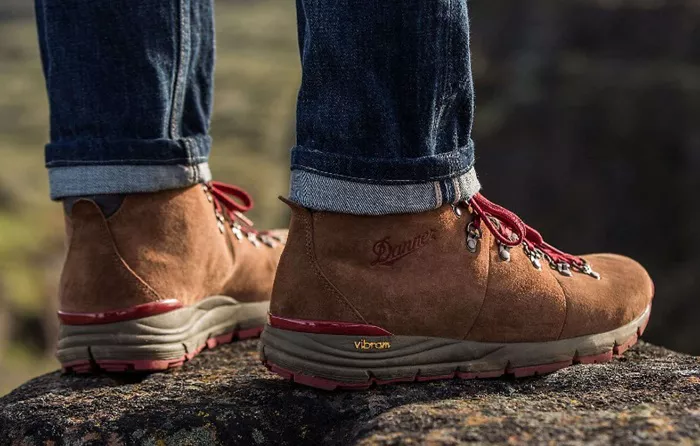When selecting the right hiking boots, one of the most important factors to consider is toe room. Having adequate space for your toes can significantly affect your comfort and performance on the trails. In this article, we will explore the ideal amount of toe room in hiking boots, why it matters, and how to ensure a proper fit.
Understanding Toe Room
What Is Toe Room?
Toe room refers to the space available for your toes inside a shoe or boot. It is the distance between the end of your longest toe and the front of the boot. Adequate toe room is crucial for comfort, especially during long hikes or when navigating uneven terrain.
Why Is Toe Room Important?
Having the right amount of toe room helps prevent several issues, including:
Blisters: Too little space can cause friction, leading to painful blisters.
Numbness: Insufficient room can compress nerves, resulting in numbness in the toes.
Injuries: If your toes hit the front of the boot during downhill hikes, you risk injuring them.
How Much Toe Room Is Ideal?
General Guidelines
A common recommendation is to have about 0.5 to 1 inch (1.3 to 2.5 cm) of space between your longest toe and the front of the boot. This allows enough room for your toes to move without being cramped.
Factors Affecting Toe Room Needs
Hiking Style
- If you often hike on steep trails or downhill, you may need more toe room to accommodate your foot sliding forward.
- For flat terrain, slightly less space might be sufficient.
Foot Shape
- People with wider feet may require more toe room than those with narrow feet.
- The shape of your toes also plays a role. For example, if you have longer toes, you may need additional space.
Socks
- Thick hiking socks take up more space, so consider this when measuring for toe room.
- Always try on boots with the socks you plan to wear on your hikes.
How to Measure Toe Room
Step-by-Step Guide
Wear Your Hiking Socks: Put on the socks you intend to wear while hiking.
Try on the Boots: Slip on the hiking boots and lace them up comfortably.
Check the Fit: Stand up and ensure your heel is snug in the back of the boot.
Test the Toe Room:
- Push your foot forward in the boot.
- Use your fingers to check the space between your longest toe and the front of the boot. You should feel at least 0.5 to 1 inch.
Walk Around: Take a few steps in the boots. Ensure there is no pressure on your toes, and they should not feel cramped.
Signs of Improper Toe Room
Too Little Toe Room
Cramping: Your toes may feel squished or cramped.
Pain: You might experience discomfort or pain during movement.
Blisters: Frequent blisters can indicate insufficient toe room.
Too Much Toe Room
Heel Lift: If your heel lifts when you walk, it might mean the boot is too big.
Lack of Stability: Excessive space can lead to instability, especially on uneven terrain.
Sliding: Your foot should not slide forward or backward in the boot.
Types of Hiking Boots and Toe Room
Day Hiking Boots
These boots are generally lighter and more flexible. They may have slightly less toe room, as they are designed for shorter hikes. However, you should still ensure enough space to avoid discomfort.
Backpacking Boots
These boots are built for longer hikes and heavier loads. They often provide more toe room, as hikers may need extra space for comfort over long distances.
Mountaineering Boots
Designed for extreme conditions, these boots often have a snug fit for stability. However, they should still offer adequate toe room, especially for descending.
Adjusting Toe Room
Choosing the Right Size
When buying hiking boots, it’s essential to select the correct size. Different brands may fit differently, so always try on multiple options.
Consider Different Brands
Each boot manufacturer may have varying sizing standards. What fits perfectly in one brand may not work in another. Therefore, don’t hesitate to try different brands.
Footbeds and Insoles
Adding custom footbeds or insoles can change the fit of the boot. If you require extra toe room, ensure your footbeds don’t push your toes forward.
Tips for Finding the Right Fit
Try Boots in the Afternoon
Your feet tend to swell throughout the day. Trying on boots in the afternoon can help you find the best fit.
Wear Appropriate Socks
Always wear the socks you plan to use while hiking when trying on boots. This helps in getting an accurate feel for the fit.
Walk on Different Surfaces
If possible, walk on various surfaces when trying on boots. This will help you assess comfort and toe room more effectively.
Conclusion
Finding the right amount of toe room in hiking boots is essential for a comfortable and enjoyable hiking experience. Aim for 0.5 to 1 inch of space between your longest toe and the boot’s front. Consider your hiking style, foot shape, and the socks you’ll wear. By following the steps outlined in this article, you can ensure a proper fit and prevent discomfort on your adventures. Happy hiking!
Related topics:
- How to Dress for Mountain Hiking
- How Much Toe Space in Hiking Boots
- Best Hiking Harness for Large Dogs

